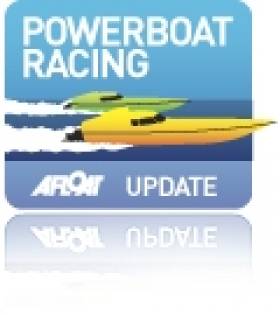Displaying items by tag: Alan Priddy
British Powerboat Legend Launches Round the World Record Bid in Revolutionary Torpedo Eco-Boat
#powerboat – British ocean powerboat racing legend, Alan Priddy, will this week launch a £2.9 million round the world record bid in a new torpedo Eco-boat powered by a revolutionary fuel emulsion that slashes harmful emissions.
Mr Priddy hopes to shave up to seven days off the current powerboat record of 60 days 23 hours 49 minutes, held by New Zealander Pete Bethune. He will make the formal announcement at the Fathom Ship Efficiency Conference, in London on Wednesday, 1st October.
The boat will pierce the waves like a torpedo, rather than surfing them, with its super-efficient design, a variant of the "fast displacement hull". This reduces fuel consumption by up to 30 per cent, and should also make the 24,000 mile trip smoother than a voyage in a conventional hulled boat.
Inside the boat will be the latest radar, safety and communications equipment from Raymarine and Iridium Communications.
The vessel will be powered by a revolutionary fuel emulsion, a mixture of diesel, water and emulsifier, which when burnt reduces harmful emissions such as particulate matter and Nitrous Oxides.
The British company behind the emulsion, SulNOx Fuel Fusions, claim that they have cracked the problem of stratification that has blighted this technology in the past. They say that by smashing ordinary fuel and water together repeatedly and under great pressure they can alter the size of the fuel particles at a nano level. To further stabilise this mixture an emulsifying agent is added. This they say has created the first safe, reliable and cost-effective fuel emulsion which will be used to power the boat as part of a million pound deal.
The effects of the emulsified fuel on the engines and the emissions will be monitored for the duration of the voyage and the results published online.
Mr Priddy commented: "This project is the culmination of a lifetime's work that I hope will highlight the amazing qualities and skills that we have in abundance in our country - the best sailors, engineers, boat builders and designers. This is why when we started this project six years ago, we called ourselves Team Britannia.
"Given last week's referendum that saw the real prospect of our country being broken up, this name seems all the more appropriate today. I hope it serves as reminder of what this country has and can still achieve."
The Team hopes to start building the boat early next year and set off on the historic voyage in November 2015, when the weather conditions will be just right.
The 80ft vessel, built out of marine grade aluminium, will be launched in late spring to allow it to complete its sea trials. It has not been named yet, but Mr Priddy says they are in talks with potential sponsors about this and hope to make an announcement in the New Year.
Mr Priddy continued: "Our first attempt at building a boat came to an abrupt end in 2012 when a fire at an adjoining factory damaged the structural integrity of the hull - but we learnt from this setback, thanks to Professor Cripps' improved design. With the addition of SulNOx, we have a boat that will not just break the world record, but will do it cleaner and greener than anyone else."
To complete the record attempt the boat must pass through the Suez and Panama Canals, cross the Tropic of Cancer and the Equator, and start and finish in the same place. The world record authorities UIM (Union Internationale Motonautique) have approved Team Britannia's proposed route, which will start in Gibraltar and call at Puerto Rico, Acapulco, Honolulu, Guam, Singapore, Oman and Malta to take on fuel.
The boat will be crewed by a team of eight, including Mr Priddy and his second in command Dr Jan Falkowski, who will be responsible for the physical and mental health of the crew.
Mr Priddy also hopes to offer a place on each leg of the epic voyage to injured servicemen or women from the Royal British Legion, or service charity BLESMA (British Limbless Ex-Serviceman Association).
He concluded: "We have the finest maritime designers, builders and sailors in the world. The British boat Cable & Wireless Adventurer first set the round the world powerboat record in 1998 and held it for nearly a decade. When this record, the pinnacle of powerboating was lost to the New Zealand boat Earthrace, I knew we had an amazing opportunity to once again showcase the best of British. To show why our marine industry is still the best.
"Team Britannia aims to do just that. It brings together just a few of the people who make Britain and our marine sector great."





























































